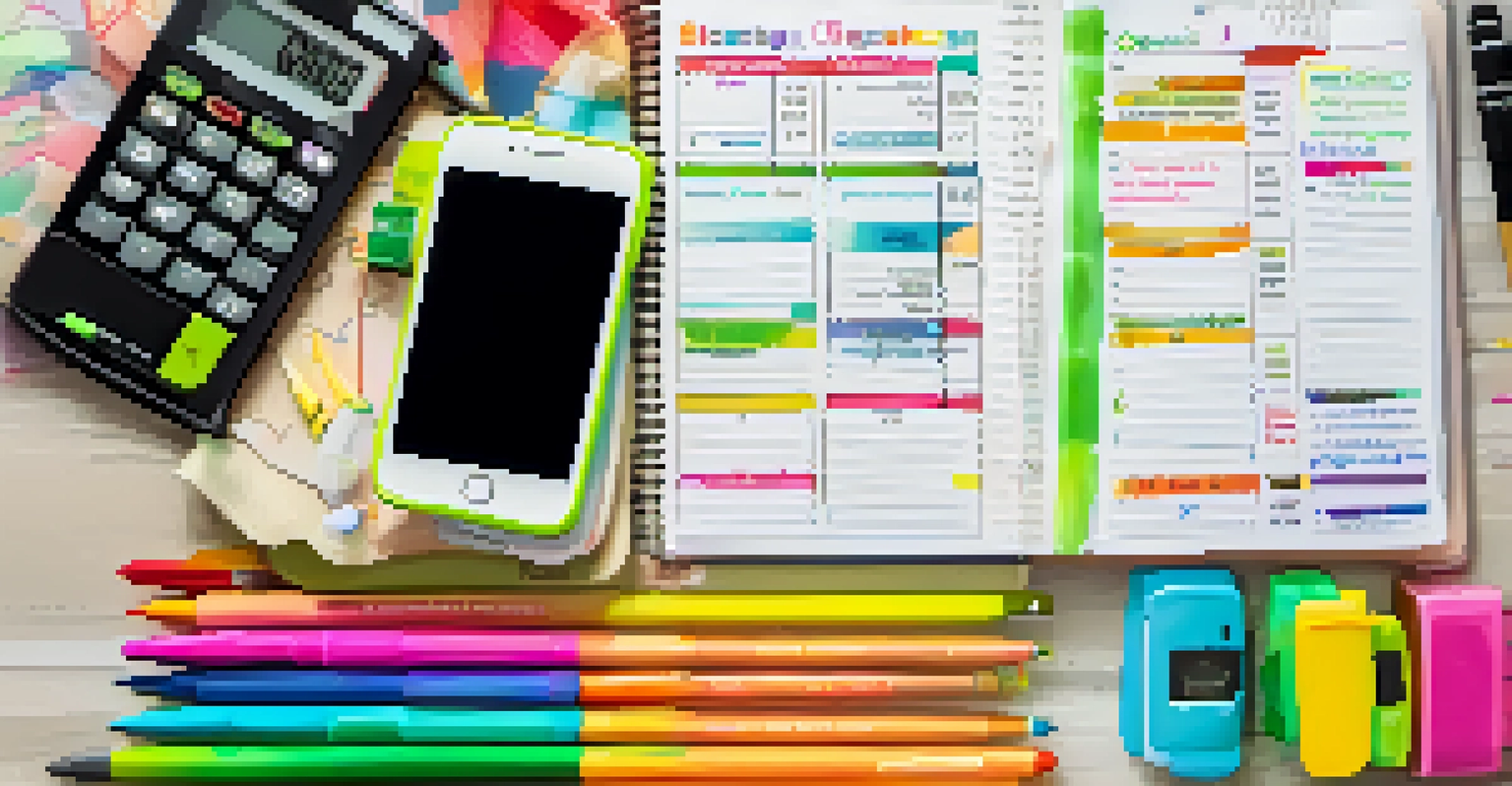Creating an Emergency Budget: Tips for Financial Resilience

Understanding the Importance of an Emergency Budget
An emergency budget is your financial safety net, designed to help you navigate unexpected expenses. Whether it's a medical bill, car repair, or job loss, having a budget in place can alleviate stress during tough times. This proactive approach empowers you to stay afloat without spiraling into debt.
A budget is telling your money where to go instead of wondering where it went.
By acknowledging the potential for emergencies, you can prepare yourself mentally and financially. Think of it like a parachute; while you hope you never need it, having one can make all the difference when you jump into the unknown. This mindset shift can transform your financial outlook and increase your resilience.
Creating an emergency budget not only protects your immediate financial health but also fosters long-term stability. It encourages you to evaluate your spending habits and prioritize what truly matters, paving the way for future financial success.
Assessing Your Current Financial Situation
Before you can build an emergency budget, it’s essential to take a close look at your current financial situation. Start by listing all your income sources and monthly expenses, which will help you see where your money is going. This step is crucial because it lays the groundwork for identifying areas where you can cut back if needed.

Consider using a budgeting app or spreadsheet to track your finances more effectively. Visualizing your income versus expenses can provide valuable insights, making it easier to pinpoint unnecessary expenditures. You might be surprised to find subscriptions or services that you no longer use, which can be trimmed from your budget.
Emergency Budget as a Safety Net
An emergency budget prepares you for unexpected expenses, providing financial security during tough times.
Once you have a clear snapshot of your finances, you can determine how much you can allocate towards your emergency budget. This will not only empower you to save but also give you peace of mind knowing you’re prepared for whatever life throws your way.
Setting Realistic Savings Goals
When creating an emergency budget, setting realistic savings goals is vital. Aim to save enough to cover three to six months of living expenses, but don’t feel overwhelmed if that seems out of reach. Start small—perhaps target saving one month’s worth of expenses before gradually increasing that amount as you become more comfortable.
It's not about how much money you make, but how much you keep and how hard it works for you.
A practical way to achieve your savings goals is to break them down into manageable monthly amounts. For example, if you decide on a target of $3,000 for six months, that’s just $500 a month. This method makes your goal less intimidating and allows you to track your progress, which can motivate you to keep going.
Additionally, consider automating your savings to ensure consistency. Setting up automatic transfers to a separate savings account can make saving feel effortless and less like a chore, allowing you to build your emergency fund without overthinking it.
Identifying and Prioritizing Essential Expenses
To effectively create an emergency budget, you need to identify and prioritize your essential expenses. These are the costs that you cannot live without, such as housing, utilities, food, and transportation. By distinguishing between needs and wants, you can allocate your resources more efficiently during an emergency.
To illustrate, think of your essential expenses as the foundation of your financial house. Without a strong foundation, everything else becomes shaky and unreliable. Prioritizing these expenses ensures that your basic needs are met, even when funds are limited.
Assess Finances Before Budgeting
Evaluating your current financial situation is crucial for identifying spending habits and areas to save.
Once you have your essentials outlined, you can better assess what discretionary spending can be reduced or eliminated. This targeted approach not only helps you save money but also builds a buffer for those unexpected situations that life may throw at you.
Creating a Flexible Budget Plan
Flexibility is key in any budget, especially when it comes to emergencies. Your budget should be a living document that can adapt to changing circumstances. As life evolves, so will your needs, and having a flexible budget allows you to pivot without feeling stressed.
To create a flexible budget, consider using the 50/30/20 rule as a guideline. Allocate 50% of your income to needs, 30% to wants, and 20% to savings and debt repayment. This structure can help you maintain balance while still being able to adjust categories as needed during tough times.
Regularly review and adjust your budget to reflect new financial realities. Whether you get a raise, face unexpected expenses, or change jobs, revisiting your budget ensures that it remains relevant and effective, providing you with the financial resilience you need.
Utilizing Financial Resources and Tools
In today's digital age, there are countless resources and tools available to help you create and manage your emergency budget. From budgeting apps like Mint and YNAB to financial planning websites, these tools can simplify the budgeting process and keep you organized. Utilizing technology can make tracking your finances less daunting and more efficient.
Additionally, consider seeking guidance from financial advisors or organizations that offer budgeting workshops. These professionals can provide personalized tips and insights based on your unique situation, helping you build a more robust financial strategy. Sometimes, a little expert advice can go a long way.
Regular Budget Reviews are Essential
Regularly reviewing and adjusting your emergency budget helps maintain alignment with financial goals and adapt to life changes.
Don’t forget about community resources and support groups, which can be a great source of motivation and accountability. Connecting with others who are on a similar journey can provide encouragement and share practical tips that have worked for them.
Reviewing and Adjusting Your Emergency Budget Regularly
Creating an emergency budget is not a one-time task; it's an ongoing process. Regularly reviewing your budget helps you stay aligned with your financial goals and adapt to any life changes. Set a schedule, whether it's monthly or quarterly, to evaluate your spending habits and savings progress.
During these reviews, take the time to celebrate the milestones you’ve achieved. Recognizing your progress can keep you motivated and reinforce positive financial behaviors. Remember, budgeting is a journey, not a destination, and every step forward counts.

If you find that your financial situation has changed—perhaps due to a new job or unexpected expenses—don’t hesitate to adjust your budget accordingly. Flexibility is crucial, and being proactive about these changes will help you maintain your financial resilience in the long run.